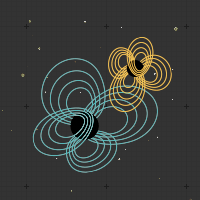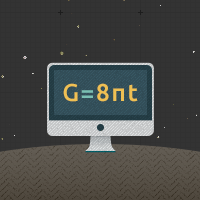P
P
Parsec
A measure of distance which is roughly 3.26 Light Years.
Pauli Exclusion Principle
A rule in Physics which says that no two identical particles can be in the same state (position, for instance) at the same time. This principle only applies to fermions, not to bosons. It is usually referred to as the "Pauli Exclusion Principle", after its inventor Wolfgang Pauli.
Period
The length of time between two events. For a wave, this is usually the length of time it takes two successive peaks to pass a given point. This number is simply 1 divided by the Frequency of the wave.
Phase
- For a wave, the position of any particular feature of the wave.
- For matter, a distinct form of a substance, such as solid, liquid, or vapor.
Phase Transition
A change of the state of matter from one phase to another, such as the transition from liquid water to solid ice.
Photon
An Elementary Particle which carries the energy of light. The photon is a Boson, and has no mass. It always moves at the Speed of Light.
pi
or π (Pronounced as "pie".) An important number in geometry. This is defined to be the ratio of the circumference of a circle to the diameter of that circle, in flat space. π is an irrational number, which means that its exact value cannot be written down, though it can be calculated as precisely as necessary. Its value is approximately 3.14159265358979323...
Powers of 10
In order to write very large, or very small numbers efficiently, scientists use a system of writing in powers of 10. For example, the number 108 represents 10 multiplied by itself 8 times, which is a 1 with 8 zeroes after it: 100,000,000. Thus, rather than writing 300,000,000, a scientist will write 3 × 108. Similarly, a number like 10-21 represents 0.1 multiplied by itself 21 times, which is a 1 with 21 zeroes in front of it (including the one before the decimal point): 0.000000000000000000001.
Proton
One of the particles in an atomic nucleus. These are electrically positive particles which attract electrons to the atom. Protons are fermions, and are very similar to neutrons, except that they have electric charge, and a slightly higher mass.
Pulsar
A neutron star with a very high rate of spin, and very intense magnetic fields. The pulsar gives off beams of radiation along its magnetic poles. If these poles are not aligned with the spin poles, the beam will sweep around like the beam of a lighthouse.




